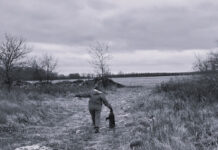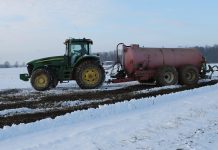Autumn leaves are starting to fall, and now is a good time to consider alternatives to dumping them in the street. Even though your community may offer this service, you might want to consider the option of recycling those leaves on your property, where your own landscape can benefit from this annual fall of rich, organic matter.
Recycling leaves on your lawn also keeps them out of storm drains and away from surface waters, where they would only add nutrients that encourage algal blooms. Homeowners should also avoid blowing or dumping leaves and grass clippings into lakes, ponds, ditches or storm water retention basins.
If we want clean water, we need to avoid any unnecessary addition of nutrients to our waterways.
Leaf litter
Leaves are not litter. Leaf litter — what a terrible name for such a valuable natural resource. During the growing season, the trees on your property draw nutrients and minerals from the soil, converting them into new leaves and branches. When you rake and remove those leaves in the fall, you interfere with the natural cycle by which nutrients are returned to the soil.
By annually removing the leaf litter, the soil will gradually lose its fertility, and that will ultimately affect the health of the plants you are trying to grow.
Insects
Additionally, many insects need the loose substrate that is created when leaves are left on the ground beneath trees. Many moth and butterfly caterpillars that feed on the leaves of trees and shrubs drop to the ground beneath their host plants to complete their life cycle by over-wintering in the leaf litter.
When we get out our rakes and leaf blowers and remove this critical habitat we reduce the number of spring emerging moths and butterflies. Any disruption to the life cycle of these species will ultimately reduce the number of caterpillars that will be available for birds to rear their young the following spring and summer.
Caterpillars are the most efficient and nutritious food choice for nearly all Ohio birds while feeding nestlings. Other beneficial insects also depend on the soil conditions that are created by undisturbed leaf litter beneath trees and shrubs to complete their life cycle.
Minimizing and maximizing
So, how do we maximize the benefit of keeping leaves on our property while also minimizing efforts to manage them?
The best way is to mow the leaves that blow into your lawn, especially if you have mulching blades on your mower. It may take several passes to chop the leaves up into fine enough pieces. Even if your lawn has some brown mulched leaf patches for a few days, the chopped leaves will quickly settle to the soil, and you should see some grass leaves poking through.
If you don’t see grass above the chopped leaves after a few days, then run the mower over them again. When the chopped leaves finally settle around the grass blades, they will also help block the sunlight that many weed seeds require to germinate. So, by mulching leaves into your grass you can also reduce weed germination in your lawn.
Spreading costly fertilizers on your lawn may restore some nutrients, but it will not replace all of the vital minerals and organic matter needed for healthy, vigorous grass.
On the other hand, leaves contain both the macro and micro-nutrients that your lawn and landscape needs.
Do you have lots of trees? If your landscape hosts many trees that produce more leaves than what you can reasonably mulch into your turfgrass, consider composting those extra leaves. Leaf compost can be used to amend soil in flower and vegetable gardens or can be used in the same way you might use hardwood mulch around existing plants in landscape beds.
Gardeners have long referred to composted leaves as brown gold. To prove the point, if you go to a garden center to purchase leaf humus you will have to pay about $10 more per cubic yard of this litter than you would for premium topsoil.
Recycling
In conclusion, by choosing to recycle your leaves you can: reduce the cost of purchased landscape products, increase the fertility of the soil on your property, reduce weed germination in your turfgrass, improve wildlife habitat for birds, moths, butterflies and other creatures and have a positive impact on the water quality in your watershed.
Remember, we all live in a watershed and therefore we should all do our part to keep the water clean in our streams and lakes, especially Lake Erie. The Great Lakes system also supports our economic vitality and we need to keep them swimmable, fishable and drinkable.













